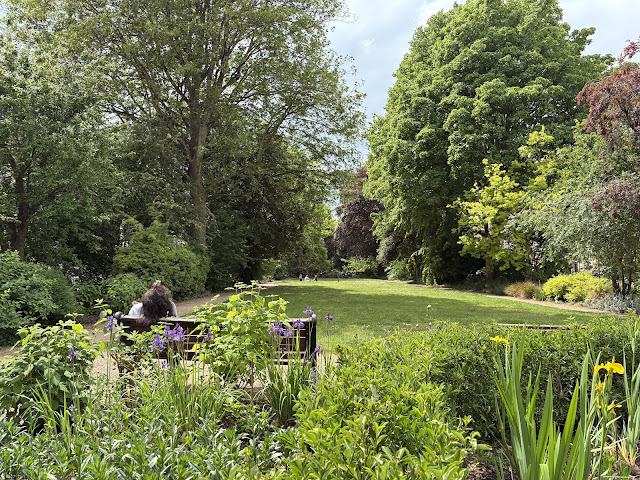The Clifton Suspension Bridge spans the Avon Gorge and the River Avon. The bridge was designed by Isambard Kingdom Brunel. Construction began in 1836 but was interrupted in 1843 through lack of funds. It was not until 1864, five years after Brunel's death that the bridge was completed. As a monument to his fame, the chains used were those from the Hungerford bridge designed and erected by him in 1843.
The bridge has three independent wrought iron chains per side, from which the bridge deck is suspended by 81 matching vertical wrought iron rods.
We stopped to have a view of the gorge and river before crossing the bridge - it was phenomenal. The cliffs plunge 90 meters to the river Avon - it really is an amazing sight.
The cliff, called St Vincent's Rocks, is home to hundreds of different plants, more than 30 of which are very rare. Consequently the gorge is one of the top botanical sites in the UK. Some of the rarities that thrive here, include: the honewort, a tiny, rare member of the carrot family; the autumn squill, whose delicate lilac flowers appear in late summer - Mrs Glennie (the wife of Brunel's assistant) warned him that the building work would destroy a colony of this rare plant, so Brunel had the bulbs replanted further along the Gorge; the Bristol whitebeam, a tree that is endemic to the Gorge, which has characteristically shaped leaves with white, hairy undersides and has orange berries.

I was looking forward to crossing to the other side, as the views of Bristol would be spectacular, but we were not allowed to, as they starting work on that side
We saw signs like this everywhere. The bridge is well known as a suicide bridge and is fitted with plaques that advertise the telephone number of the Samaritans. Between 1974 and 1993, 127 people fell to their deaths from the bridge. In 1998 suicide barriers were installed on the bridge to prevent people jumping. This reduced the suicide rate from eight deaths per year to four.
Just amazing.
Just amazing.
I could see that small yellow platform on the cliffs again, so I zoomed in
It's an old cave, and from the Observatory you can pay, get a hard hat and visit the cave which dates back to 305 AD, where it was first mentioned as being a chapel. The Giant's Cave Sits 250 feet (76 m) above the Avon Gorge. The tunnel to the cave leads for 200 feet from the Observatory and took two years to build, opening to the public for the first time in 1837. We decided not to go, even though it was tempting.









































































